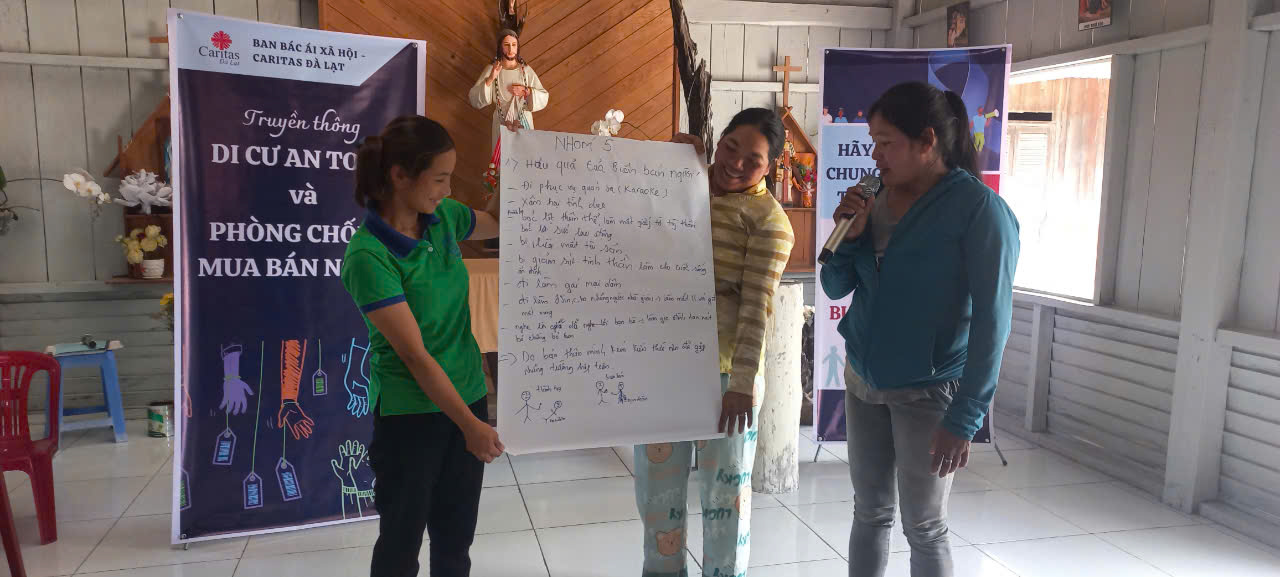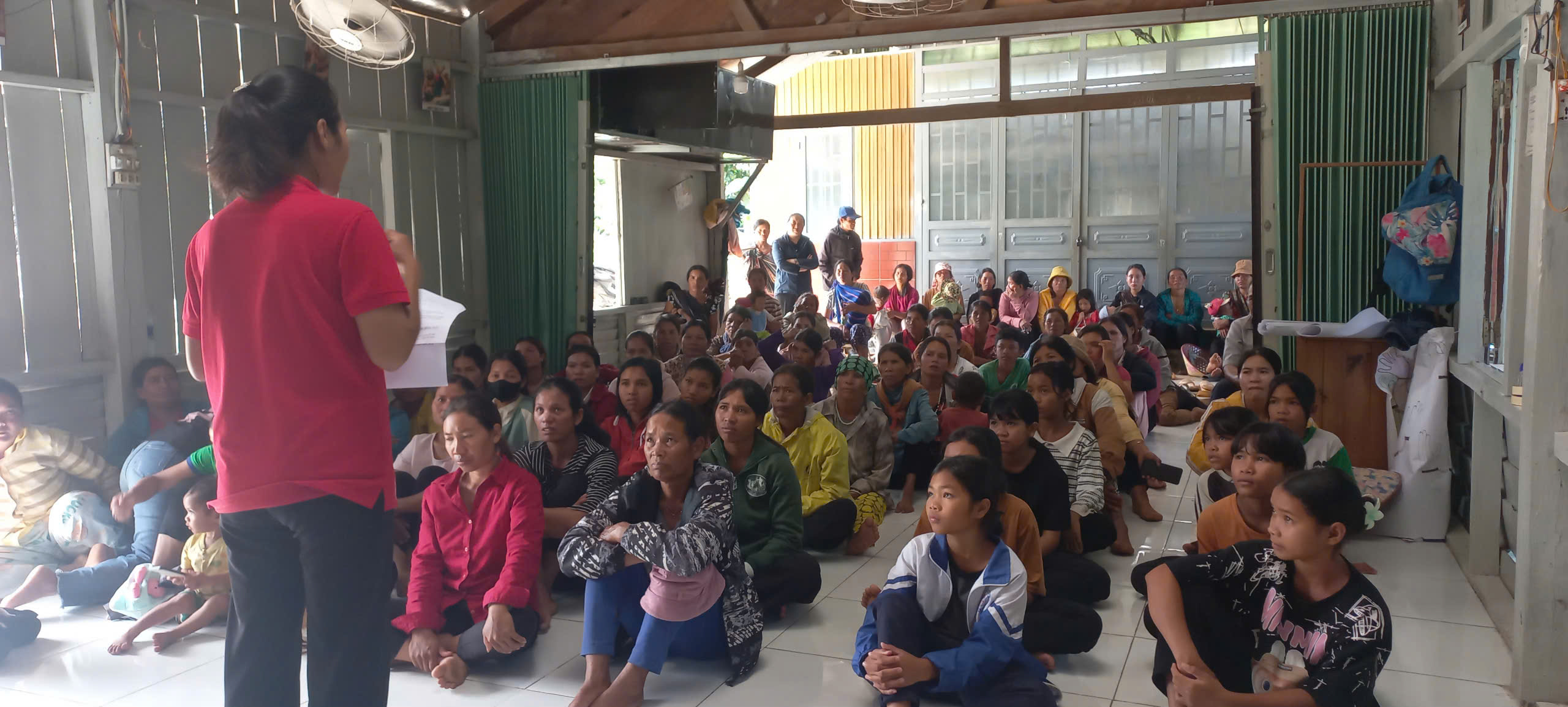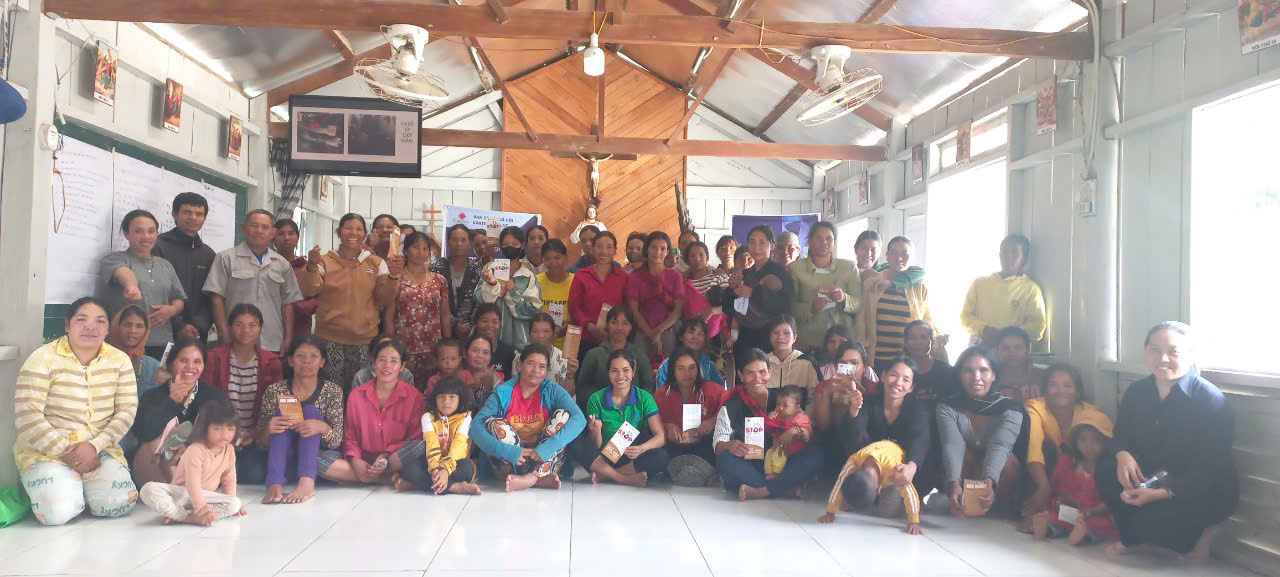On the morning of October 11, 2024, from 9:00 to 11:30, an anti-human trafficking communication session was held in the Ntol community, located in Ntol village, Da Tong commune, Dam Rong district, Lam Dong province. The session was attended by over 80 participants, including Cil women and secondary school students aged 12-13.
This communication session aimed to raise awareness about human trafficking, particularly in the context of mountainous areas facing economic and transportation difficulties. In these regions, where people primarily engage in farming and hired labor, access to knowledge about human trafficking remains limited.
The context of Ntol community
Ntol is a remote mountainous community facing economic hardship and difficult transportation conditions. The population primarily consists of the Cil people, an ethnic minority with low levels of education and limited proficiency in Vietnamese, which hinders their access to external knowledge. In recent years, the community has reported several cases of labor exploitation, where workers were deceived while seeking employment. Some young people have been lured into working on fishing boats, and there was even a case last October where a woman was sold but fortunately rescued in time. As a result, villagers have become more vigilant when encountering strangers in the area.

Content of the Communication Session
In response to this situation, Caritas Da Lat organized an anti-human trafficking session to equip women and students with basic knowledge about the causes, purposes, and methods used by human traffickers. This was a valuable opportunity for the community to gain awareness and learn how to protect themselves and their families from the threats of human trafficking.
Although the communication session was long, it took place in an atmosphere of enthusiasm and active participation from everyone. Since human trafficking incidents had occurred within their own community, the women listened attentively and eagerly participated in the activities, with the desire to share this knowledge with their families and loved ones.

The Activities of the Communication Session
The communication session featured a variety of activities, allowing villagers to gain better access to and a clearer understanding of human trafficking. First, the session included a short dramatization that illustrated the sophisticated tricks used by traffickers, helping participants easily visualize how these methods exploit the psychology and circumstances of targeted victims. This was followed by a discussion on the alarming reality of human trafficking today, highlighting the risks that the community may face.
Additionally, the participants were divided into five groups to discuss important questions related to human trafficking, including its causes, identifying signs, consequences, traffickers' methods, and who could become a victim. These questions sparked active discussions and deep reflection, helping participants gain a more comprehensive understanding of this issue.
Final Synthesis and Interaction:
After the discussion, each group synthesized the knowledge gained through visual presentations, while also listening to personal stories from the community about facing the realities of human trafficking. The session concluded with a thought-provoking question: What can we do to protect ourselves, our families, and our loved ones from the risk of becoming victims of human trafficking?

The communication session may seem like a small action, but raising awareness can lead to significant change. If we are careless, human trafficking will continue to spread into every part of life, pushing innocent people into misery and harming both the safety and sustainable growth of our communities.

